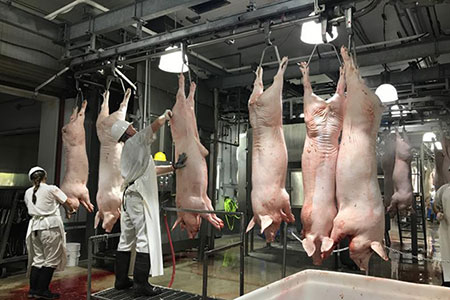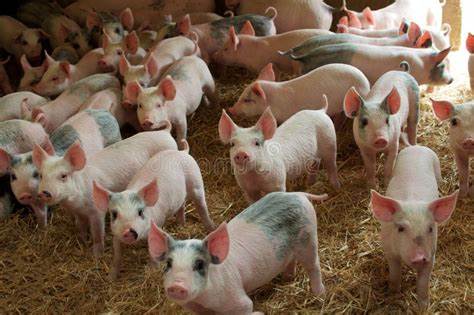Livestock Development Corporation
Pig Farming in PNG
A sample pig processing facility at the abattoir. Abattoirs can process any livestock. It is built to process cattle, pigs, goat, or sheep
Pig farming in PNG can be perceived both at commercial and local scale. The demand for pig meat is everywhere as pig had been a means of traditional value in many societies in Papua New Guinea highlands
SME Piggery farmer in Port Moresby, NCD. Papua New Guineans have the potential to venture into extensive commercial piggery projects to feed the population.


Commercial pig farming, also known as swine production, involves the breeding and raising of pigs for meat (pork). It’s a significant aspect of the agricultural industry and provides a substantial source of protein for many populations worldwide. Here’s an overview of the essential elements of commercial pig farming:
1. Types of Pig Farming
• Breeding Stock: Farms may produce piglets for sale to other farms or facilities, focusing on genetics and breeding for specific traits.
• Finishing Operations: These farms purchase weaned piglets and raise them until they reach market weight, typically between 250 to 300 pounds (113 to 136 kg).
• Dual-purpose Operations: Some farms combine breeding and finishing, raising a herd for both breeding and meat production.
2. Breeds
• Popular breeds include:
o Yorkshire: Known for high reproductive performance and good growth rates.
o Landrace: Noted for large litters and high-quality meat.
o Duroc: Recognized for excellent meat quality and fast growth.
o Berkshire: Valued for superior flavor and marbling in meat.
o Tamworth: A heritage breed known for hardiness and quality pork.
3. Housing and Infrastructure
• Pig Housing: Pigs require clean, dry, and well-ventilated housing that protects them from extreme weather. Common types of housing include barns, A-frame buildings, or hoop structures.
• Flooring: Slatted or solid floors are used, with careful consideration for hygiene and ease of manure management.
• Feeding Systems: Automated feeding systems are often employed to ensure pigs receive precise amounts of balanced diets, which typically include grains, proteins, vitamins, and minerals.
4. Management Practices
• Health Management: Regular veterinary check-ups, vaccinations, and proactive pest control strategies are critical for preventing disease outbreaks. Biosecurity measures are essential to minimize disease risks.
• Breeding Management: Effective breeding techniques, including artificial insemination and maintaining genetic diversity, play a vital role in improving herd quality and productivity.
• Nutrition: A proper diet is essential for optimal growth, reproduction, and overall health. Nutrition should be tailored to different growth stages, from weaner to finishing pigs.
5. Economic Considerations
• Costs and Investments: Major costs include feed, housing, health care, and labor. Efficient feed conversion ratios are crucial for profitability.
• Market Dynamics: Understanding consumer preferences and market trends can provide insights into pricing strategies for pork products. Processed and specialty products, such as organic or free-range pork, may garner higher prices.
• Regulatory Compliance: Adhering to food safety standards, animal welfare regulations, and environmental laws is crucial for sustainable operations and market access.
6. Environmental Impact
Commercial pig farming can have significant environmental implications, including nutrient runoff from manure, greenhouse gas emissions, and land use for feed crop production. Implementing sustainable practices such as manure management systems, rotational grazing (where possible), and by-product recycling can help mitigate these impacts.
Conclusion
Commercial pig farming can be a profitable venture, especially with effective management practices and a clear understanding of market demands. Success relies on breeding, health, nutrition, and adherence to regulations.

